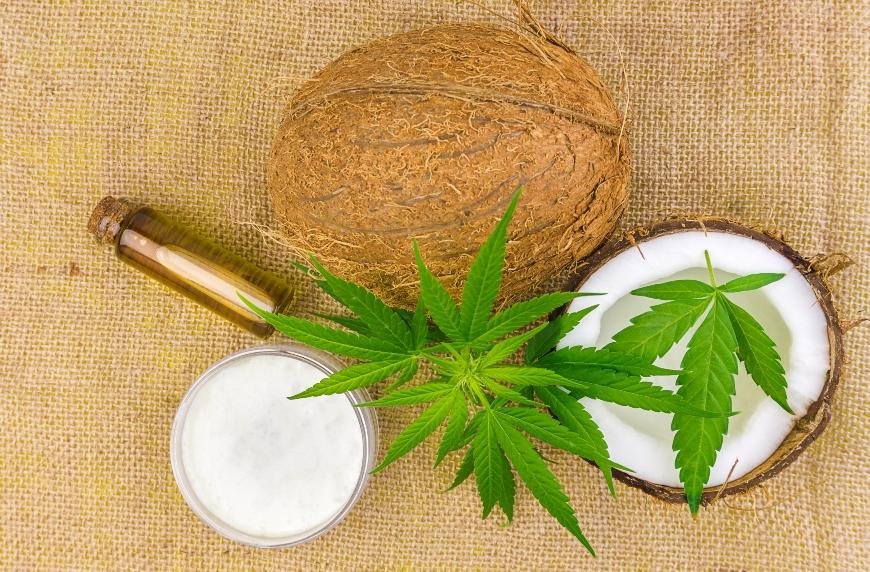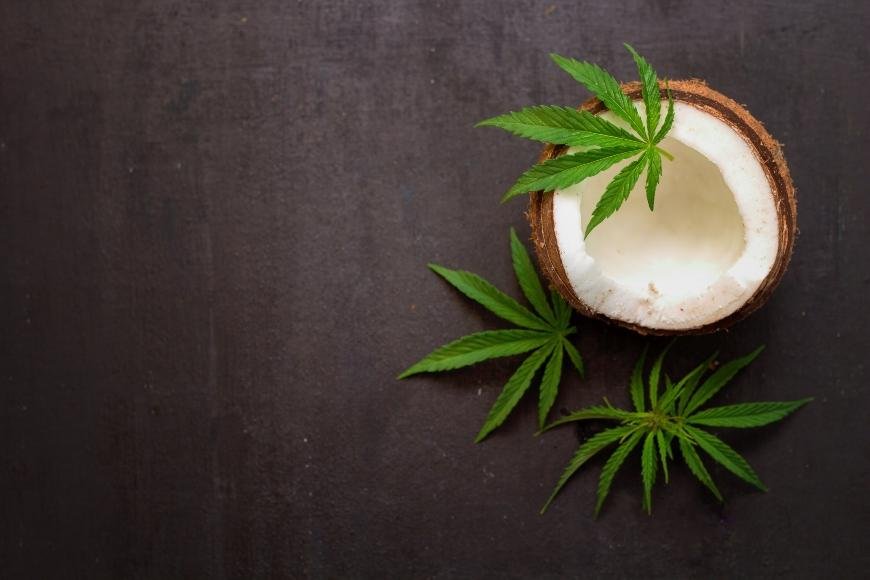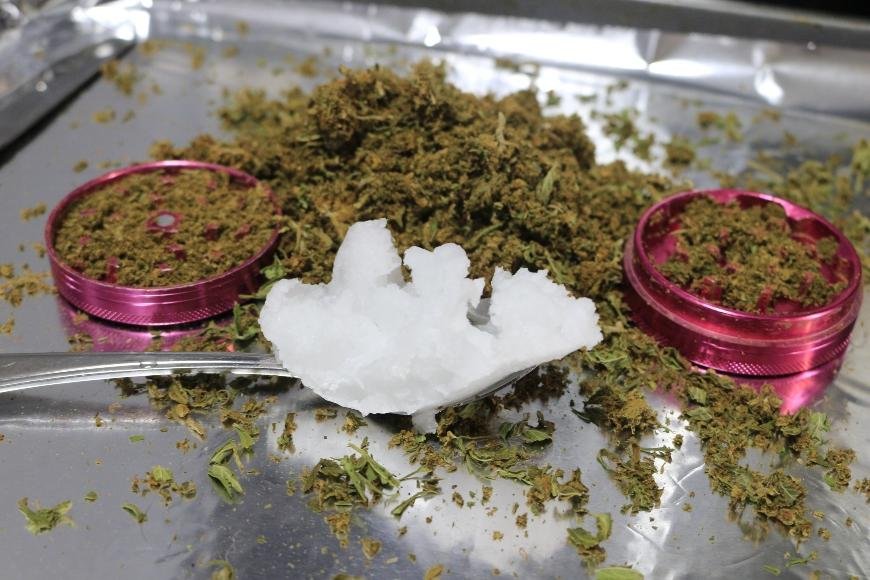How to Make Cannabis Coconut Oil
Discover how to make cannabis coconut oil with our simple guide, perfect for homemade edibles and enhancing your favorite recipes. Unleash the benefits today!

Are you curious about how to make cannabis coconut oil? This versatile infusion combines the benefits of both cannabis and coconut oil, making it a popular choice for homemade edibles. In this blog post, we will explore the many advantages of using coconut oil for your cannabis infusions.
We'll provide you with a comprehensive guide on equipment and ingredients needed, as well as step-by-step instructions on making cannabis-infused coconut oil. Additionally, we'll discuss tips for enhancing potency and flavor while also sharing some potential uses of this versatile concoction in your favorite recipes.
Dosage considerations are crucial when experimenting with homemade edibles; therefore, we will address that topic to ensure safe consumption. By the end of this post, you'll be well-informed to make the most out of cannabis-infused coconut oil.
Table of Contents:
- Benefits of Using Coconut Oil for Cannabis Infusion
- Equipment and Ingredients Needed
- Enhancing Potency and Flavor
- Potential Uses of Cannabis-Infused Coconut Oil
- Dosage Considerations
- Harnessing the Benefits of Cannabis-Infused Coconut Oil
- FAQs in Relation to How to Make Cannabis Coconut Oil
- Conclusion
Benefits of Using Coconut Oil for Cannabis Infusion
The use of coconut oil as a base for cannabis extraction offers several advantages. One major benefit is its high-fat content, which allows efficient extraction and retention of cannabinoids from the cannabis plant. The advantages of coconut oil as a base for cannabis extraction are numerous, one being its capacity to yield potent and varied products.
Coconut oil also boasts numerous health benefits on its own, such as improving heart health, promoting weight loss, and providing antimicrobial effects. When combined with cannabis, these properties are further enhanced to create an effective natural remedy or supplement.
In addition to these benefits, coconut oil has a relatively mild flavor profile compared to other carrier oils like olive or hemp seed oil. This makes it ideal for incorporating into edibles without overpowering their taste.
Equipment and Ingredients Needed
To make cannabis-infused coconut oil, you'll need a few essential items and ingredients. First, gather the following equipment:
- Herb grinder
- Oven-safe dish or baking sheet for decarboxylation
- Slow cooker or double boiler
- Cheesecloth or fine mesh strainer
- Mason jar with lid for storage
Next, prepare your ingredients:
- High-quality cannabis (flower is recommended)
- Pure organic coconut oil (unrefined virgin coconut oil works best)
Making Cannabis-Infused Coconut Oil
Creating cannabis-infused coconut oil is a simple process that requires minimal equipment and ingredients. Begin by grinding your cannabis into a fine consistency using a grinder or food processor. Decarboxylate the ground cannabis by baking it at 240°F (115°C) for 30-40 minutes to activate its chemical compounds.
Once decarboxylated, combine the activated cannabis with coconut oil in a slow cooker or saucepan. The ideal ratio of cannabis to coconut oil is one gram of cannabis per ounce of oil. Heat the combination of decarboxylated cannabis and coconut oil in a slow cooker or saucepan at low temperature for several hours, stirring periodically to guarantee uniform infusion.
To complete the process, strain the infused oil through cheesecloth or a fine mesh strainer to remove any remaining plant material. This will ensure that your homemade edibles have a higher smoke point and a smoother taste. Store your finished product in a mason jar or any air-tight container away from direct sunlight and heat sources for optimal shelf life. You can use this cannabis coconut oil in your favorite recipes to add a unique twist to your dishes.

Enhancing Potency and Flavor
To create a more potent and flavorful cannabis-infused coconut oil, consider the following tips:
- Use high-quality cannabis strains: Selecting top-notch cannabis strains ensures better extraction of cannabinoids, resulting in a stronger infusion.
- Vary strain combinations: Experiment with different strain combinations or ratios to achieve your desired effects. Mixing indica and sativa strains can produce unique flavor profiles and potency levels.
- Add terpenes: Incorporate natural terpenes like limonene or myrcene for an enhanced aroma and taste. Terpenes also have their own therapeutic benefits that complement cannabinoids.
- Sunflower lecithin: Adding sunflower lecithin increases bioavailability, making it easier for your body to absorb the infused oil's active compounds.
Potential Uses of Cannabis-Infused Coconut Oil
Cannabis-infused coconut oil offers a versatile option for incorporating the benefits of cannabis into various applications. Some popular uses include:
- Edibles: Use it as an ingredient in your favorite recipes, such as brownies, cookies, or even savory dishes.
- Topicals: Create soothing balms and salves by combining the infused oil with other natural ingredients like beeswax and essential oils. This can be applied to the skin for localized relief from pain or inflammation.
- Daily supplement: Take a small amount daily as a standalone supplement to support overall wellness. Start with low doses and gradually increase based on individual needs.
In addition to these common uses, you can also experiment with adding cannabis-infused coconut oil to smoothies, coffee, or tea for an extra boost of cannabinoids throughout your day. Remember that proper dosing is crucial when consuming any form of cannabis product - always start low and go slow.
Dosage Considerations
When making cannabis coconut oil, it's essential to start with a low dose and gradually increase as needed. Since everyone's body reacts differently to cannabinoids, finding the right dosage may require some experimentation. To help you determine your ideal dose, consider the following factors:
- Potency of infused oil: The potency of your cannabis-infused coconut oil will depend on the strain used and its cannabinoid content. Be sure to take note of this information when calculating your dosage.
- Desired effects: Depending on whether you're seeking relaxation or pain relief, you may need different dosages for desired results. Keep track of how various doses affect you and adjust accordingly.
- Tolerance levels: If you're new to consuming cannabis products or have a low tolerance level, start with smaller doses (5-10mg THC) and monitor your reaction before increasing.
Incorporating these considerations into your usage routine can ensure a safe and enjoyable experience with cannabis coconut oil. It's important to note that homemade edibles can be unpredictable in potency, so always start with a low dose and wait at least an hour before consuming more.
Harnessing the Benefits of Cannabis-Infused Coconut Oil
Creating your own cannabis-infused coconut oil offers the potential to unlock its various benefits. To get the most out of this versatile extraction, consider experimenting with different applications:
- Incorporate it into edibles, such as brownies or cookies, to enjoy a tasty and discreet way to consume cannabis.
- Create topical products like balms or salves for localized relief from pain or inflammation.
- Use it as a standalone supplement by adding small amounts to beverages or simply taking it straight from the spoon.
To maximize effectiveness, remember to start with low doses and gradually increase them based on individual needs and tolerance levels. With patience and experimentation, you can unlock the full potential of homemade cannabis-infused coconut oil in various aspects of your life.

FAQs in Relation to How to Make Cannabis Coconut Oil
How much coconut oil for 1 oz of cannabis?
For making cannabis coconut oil, use approximately 2 cups of coconut oil for every ounce of cannabis. This ratio ensures that the cannabinoids are well-absorbed into the oil while maintaining a manageable potency level.
Should cannabis coconut oil be refined or unrefined?
Unrefined (virgin) coconut oil is recommended over refined coconut oil when making cannabis-infused coconut oil. Unrefined oils retain more nutrients and natural flavors, which can enhance both the health benefits and taste profile of your final product.
How much cannabis for 16 oz of coconut oil?
For a standard potency level, use about half an ounce (14 grams) of decarboxylated cannabis flower per 16 ounces (2 cups) of coconut oil. You may adjust this ratio depending on your desired strength and personal preferences.
When making homemade edibles, cannabis coconut oil is a versatile and popular ingredient due to its higher smoke point and ability to be used in a variety of favorite recipes. To make your own cannabis-infused coconut oil, simply combine your desired amount of decarboxylated plant material with the coconut oil in a mason jar. Heat the mixture in a water bath for several hours, stirring occasionally, until the oil has absorbed the cannabinoids. Strain the mixture through a cheesecloth or fine mesh strainer and store in an airtight container in a cool, dark place.
By following these simple steps, you can create a high-quality cannabis coconut oil that can be used in a variety of ways. Whether you're looking to make your own edibles or simply want to enjoy the benefits of cannabis in a convenient and versatile form, cannabis-infused coconut oil is a great choice.
Conclusion
In conclusion, making cannabis-infused coconut oil is a simple and effective way to enjoy the benefits of both ingredients. By using coconut oil as a carrier for THC, users can experience longer-lasting effects and increased potency compared to other methods of consumption. Additionally, the versatility of cannabis-infused coconut oil makes it an excellent ingredient for cooking or topical applications.
Before beginning, ensure you have all the necessary equipment and ingredients to hand. Remember to start with a small dosage and gradually increase until desired effects are achieved. Through the right quantity and usage, cannabis-infused coconut oil can offer a range of health benefits while also being an enjoyable supplement to your regular routine.






































































































































